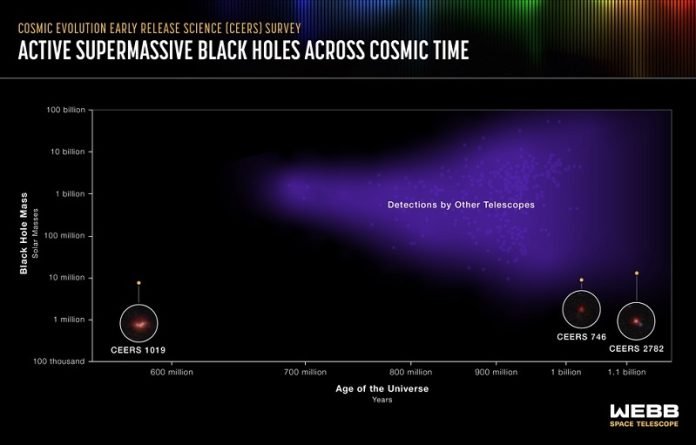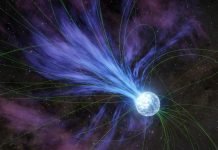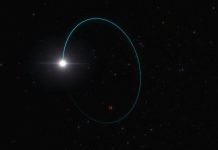
The James Webb Space Telescope has just made a massive discovery, but it’s not a massive object.
Instead, it’s an active supermassive black hole that’s incredibly far away in the galaxy CEERS 1019.
This galaxy was around just 570 million years after the big bang. What’s really amazing is how light this black hole is – it’s only 9 million times the weight of our sun.
That might seem like a lot, but compared to other black holes from that time, it’s incredibly tiny.
The black holes that we usually see from this early in the universe weigh over 1 billion times more than the sun.
But that’s not all Webb found. It also uncovered two more smaller black holes, which were around 1 and 1.1 billion years after the big bang.
Plus, it found 11 galaxies that were around when the universe was between 470 to 675 million years old.
All these discoveries were made as part of the Cosmic Evolution Early Release Science (CEERS) Survey, led by Steven Finkelstein at the University of Texas at Austin.
The researchers were amazed by the amount and quality of data that Webb was able to provide. Rebecca Larson, who led this discovery, compared studying the distant black hole to analyzing data from ones closer to home.
The wealth of information allowed the team to learn a lot about the black holes and their host galaxies.
The scientists also found that the galaxy CEERS 1019 was taking in as much gas as possible and creating new stars. The galaxy looks a bit strange, showing up as three bright clumps instead of a single circular disk.
This could be because two galaxies are merging, feeding the black hole and sparking new star formation.
The CEERS Survey is not finished yet. Two other smaller black holes were spotted in the data, in the galaxies CEERS 2782 and CEERS 746. Like the first black hole, these two are also small and were not previously detectable. They only weigh about 10 million times more than the sun.
Not only were the researchers able to find these black holes, but Webb’s data also helped them measure the exact distances to these early galaxies and find out how old they were.
The team identified 11 galaxies that existed 470 to 675 million years after the big bang. These galaxies are still making stars rapidly, but they don’t have as many chemical elements as galaxies closer to us.
This is just the beginning of the revelations from the CEERS survey. With Webb’s help, scientists can now study far-off black holes and galaxies in great detail, and these discoveries could change our understanding of how stars and galaxies evolved throughout the history of the universe.
In the future, Webb’s data could also help explain how the earliest black holes formed.
All these findings have been accepted by The Astrophysical Journal Letters and will continue to contribute to our knowledge of the early universe.
Follow us on Twitter for more articles about this topic.




